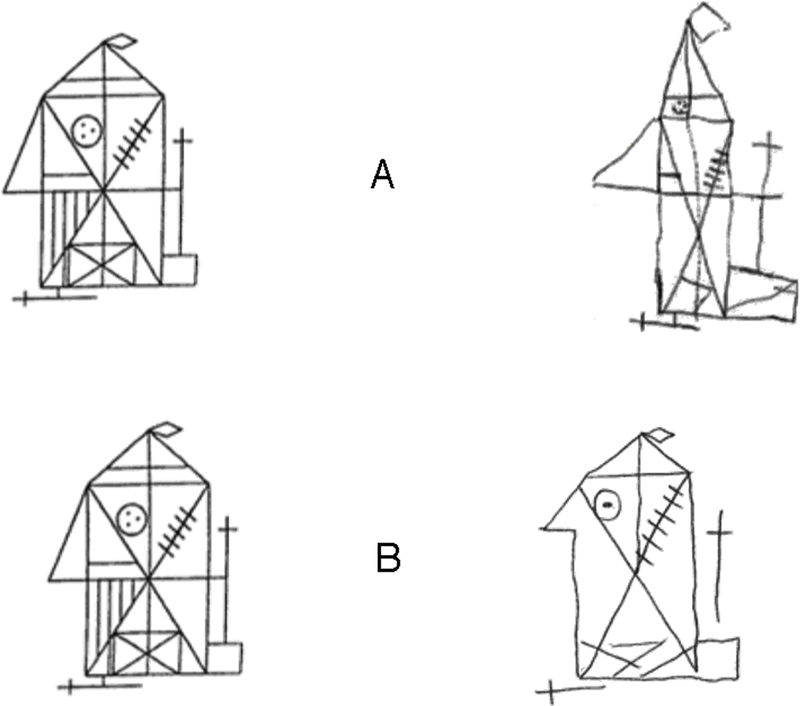Figure 2. What they draw.
Each row presents the standard Rey (1941) Complex Figure (https://en.wikipedia.org/wiki/Rey%E2%80%93Osterrieth_complex_figure) on the left and a hand-drawn copy on the right. The A. copy was made by an apperceptive agnosic patient with unrestricted viewing (Lê et al., 2002). The B. copy was made by normal observer PMS, who was instructed to fixate on the mark (replaced here by the letter B), and never look away, while copying the original in his left periphery to the blank page in his right periphery. Please note, first, that both copies, viewed directly, seem poor, with many obvious errors. According to Caffarra et al. (2002) both copies are abnormal falling within the lowest 5% (A. copy raw score 26, corrected for age and schooling years 23.5; B. copy raw score 20, corrected 19.5). Then try to see them as the participants did, by fixating on the letter A or B. This simulates the vision of the agnosic observer in A, and replicates what the normal observer did in B. When the copies are viewed peripherally, we find that they are remarkably good. All figures were hidden during rest breaks. The agnosic copy in row A is from Lê et al. (2002). The normal-periphery copy in row B appeared previously, with our permission, in Pelli and Tillman (2008).

